#Morris Robinson Book
Text





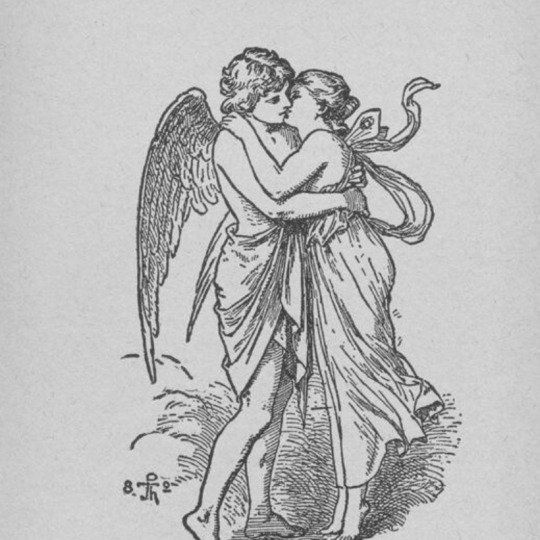


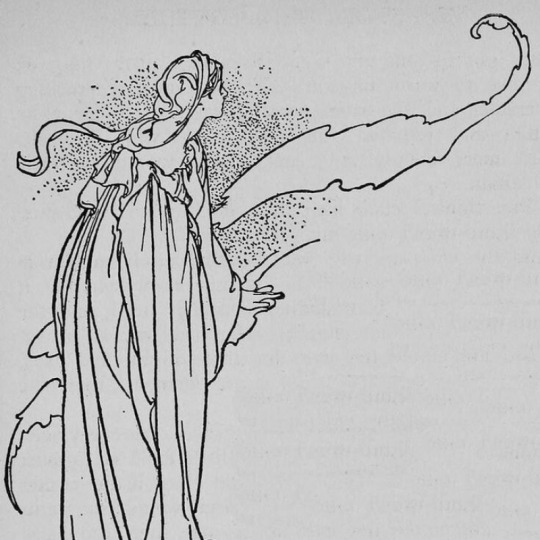
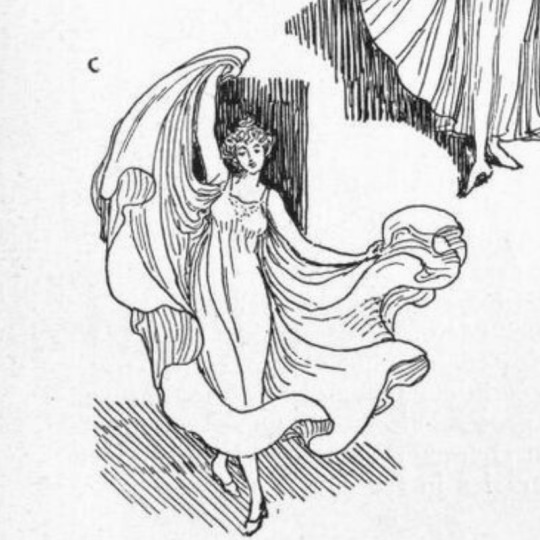
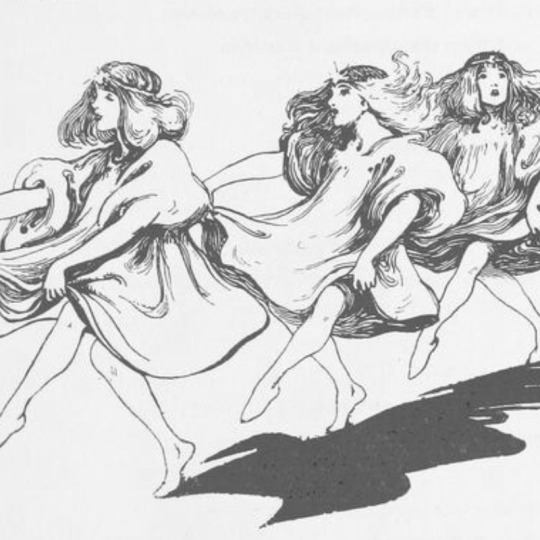
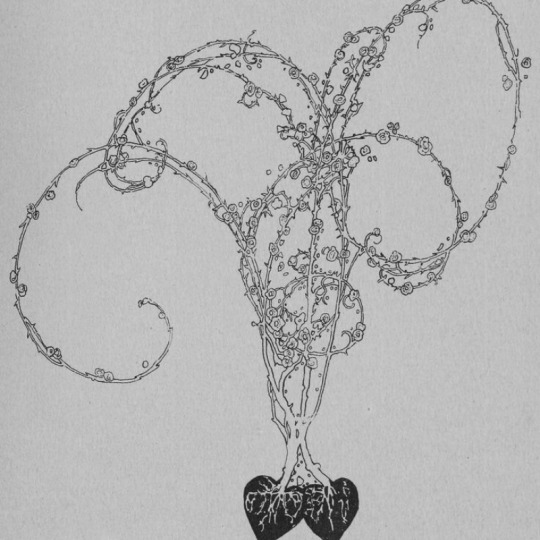


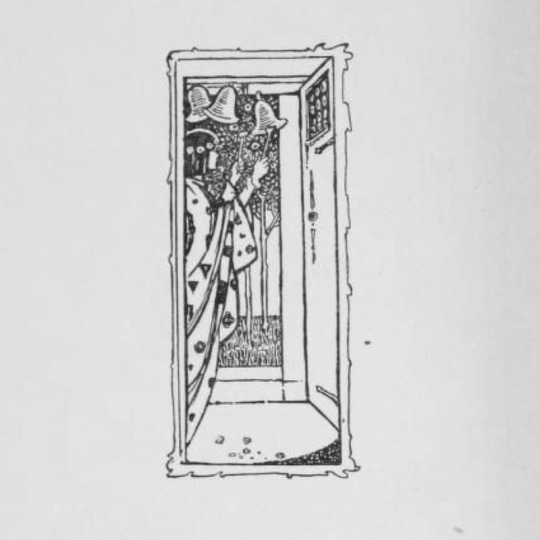





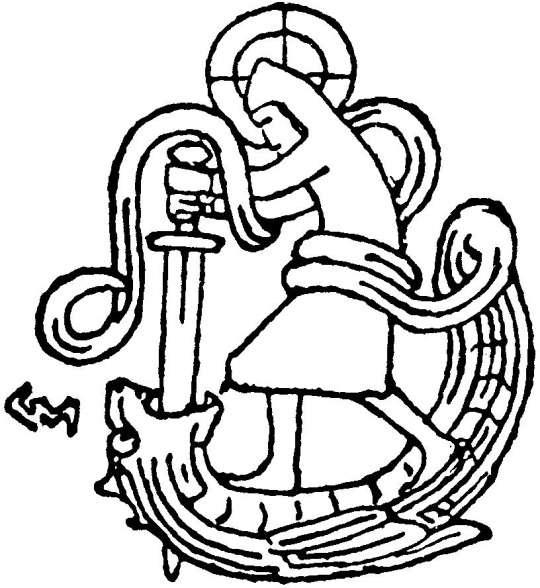

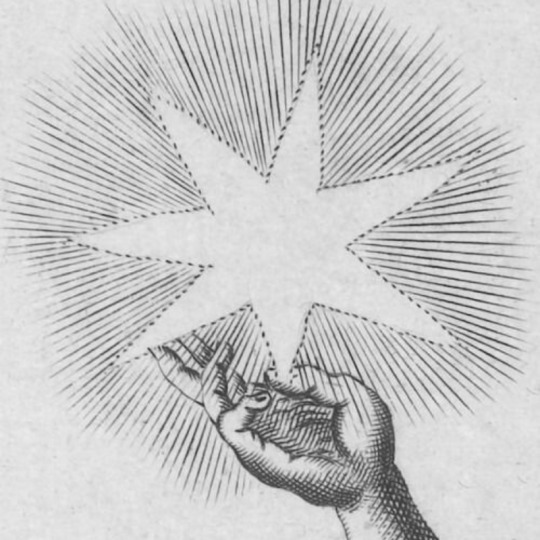

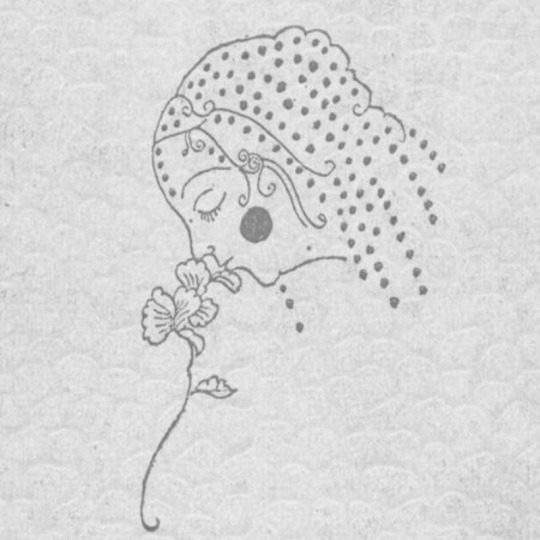
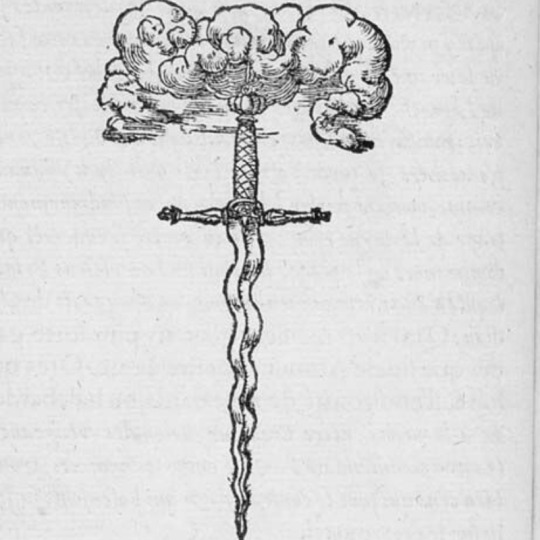

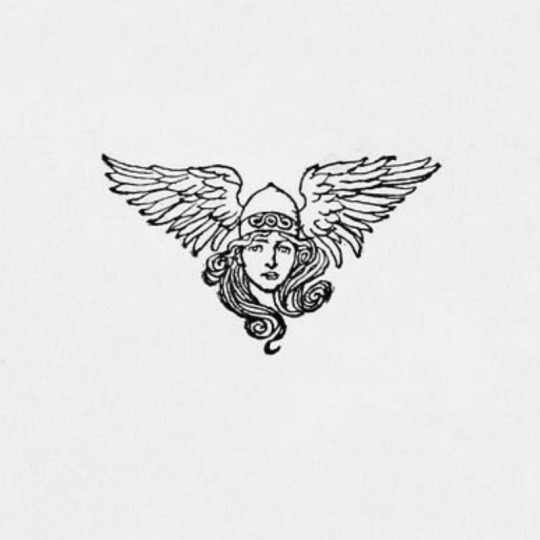
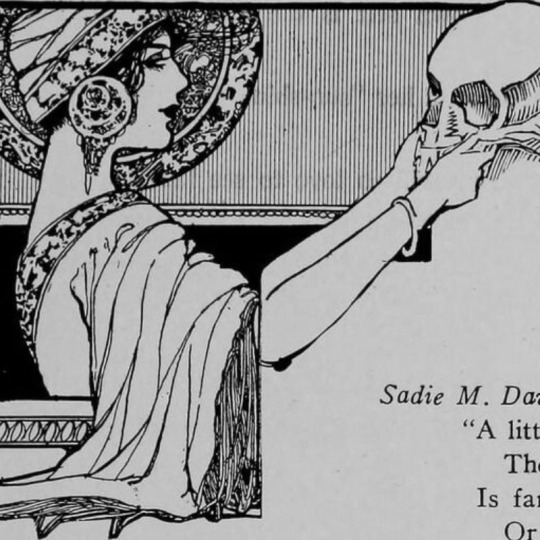

vintage illustrations + my tattoo list
#is from a bride book but the art is by john r neill#arthur rackham udine#also john r neill#from the 1914 book of shakespeare midsummer night's dream by i think william heath#it's by robert anning bell#the curiosities of kissing by alfred fowler but not sure if he's the artist#is in greek theatre costumes by iris brookes#in the book the golden fleece and the heroes who lived before achilles and the artist is willy pogany#in the book fairy tales by hans christian andersen and the artist is charles robinson#in line and form by walter crane#in the book kitchen maid and the artist is j. b. partridge#in the book the tale of lohengrin knight of the swan and the artist is willy pogany#in the book by john keats but idk the artist#in the book illustrators of montmartre by emanuel frank#in the book early poems of william morris#in the book the eve of st anges and artist is edmund h garrett#in the book home theatricals made easy or busy happy and merry#in the book the illustrated london instructor#in the book songs for little people and artist is h stratton#from alfred tennyson's poems and artist is eleanor forescue brickdale#artist is gerhard munthe#in arthur rackham's wagner ring cycle: the valkyrie#tiburtijnse sibille by jan luyken#by peter behrens#by shigeru hatsuyama#in the book devises heroiques by claude paradin#in the book price list of magical apparatus and illusions from 1884#in arthur rackham's ring cycle: valkyrie (this is my newest tattoo i got!!)#in scapel: the 1911 year book of the woman's medical college of pennsylvania#in the child world by artist c robinson
213 notes
·
View notes
Text
As Daniel Defoe (the author of Robinson Crusoe, that epic of the new oceanic highways) explained,
Credit makes war, and makes peace; raises armies, fits out navies, fights battles, besieges towns; and, in a word, it is more justly called the sinews of war than the money itself . . . Credit makes the soldier fight without pay, the armies march without provisions . . . and fills the Exchequer and the banks with as many millions as it pleases, upon demand.
"Why the West Rules – For Now: The patterns of history and what they reveal about the future" - Ian Morris
#book quotes#why the west rules – for now#ian morris#nonfiction#daniel defoe#robinson crusoe#explanation#author#credit#war#peace#army#navy#battle#besieged#money#soldiers#pay#provisions#banks
0 notes
Text
(Deliberately leaving out Star Trek because I know that way more people have seen it than read any of these books)
104 notes
·
View notes
Text

Page from the Senate Legislative Journal Showing the Expungement of a Resolution to Censure the President
Record Group 46: Records of the U.S. SenateSeries: Journals and Minute BooksFile Unit: Minute Books and Journals of the 23rd Congress
[near upper-left corner in Image:] 552
The yeas and nays being desired by one fifth of the Senators present those who voted in the affirmative, are
Messrs. Bibb, Black, Calhoun, Clay, Clayton, Ewing, Frelinghuysen, Hendricks, Kent, King of Georgia, Knight, Leigh, Mangum, Naudain, Poindexter, Porter, Prentiss, Preston, Robbins, Silsbee, Smith, Southard, Sprague, Swift, [struck-through:"Tallm"] Tomlinson, Tyler, Waggaman, Webster.
Those who voted in the negative are Messrs. Benton, Brown, Forsyth, Grundy, Hill, Kane, King of Al[']a. [abbreviation for "Alabama"; "a" seen in superscript in Image above "."]], Linn, M[']cKean, Moore, Morris, Robinson, Shepley, Tallmadge, Tipton, White, Wilkins, Wright.
On M[']r. Clay having modified his said first resolution to read as follows
[[the following text is enclosed in a hand drawn [rectangular] box]] Resolved that the President in the late Executive proceedings in relation to the public revenue, has assumed upon himself authority and power not conferred by the Constitution and laws, but in derogation of both.
[[the following text is written vertically over the text in the hand drawn box]] Expunged by order of the Senate this sixteenth day of January in the Year of our Lord 1837.
On the question to agree thereto
It was determined in the affirmative
Yeas 26 Nays 20.
On motion by M[']r. Clay,
The yeas and nays b[[?]] [[?]]ired by
23 notes
·
View notes
Text
FNF Donation Drive Giveaway!

For a chance to win three winners in random drawings will receive five NOIR CITY Magazine digital back issues — #16, #25, #28, #33, #38 —sent via WeTransfer file transfer service to your email address, donate $20 or more to the FNF between now and September 5. Your name will be entered in a random drawing. Three winners will receive the issues.
And, for a donation of $50 or more, a winner in a random drawing will receive Flicker Alley’s Blu-ray/DVD releases of two FNF restorations — Too Late for Tears (1949) with Lizabeth Scott and Dan Duryea and The Man Who Cheated Himself (1950) with Lee J. Cobb, Jane Wyatt, and John Dall. Special features produced by the FNF included on each Blu-ray/DVD.
All winners will be announced Tuesday, September 10, on the FNF's news page.
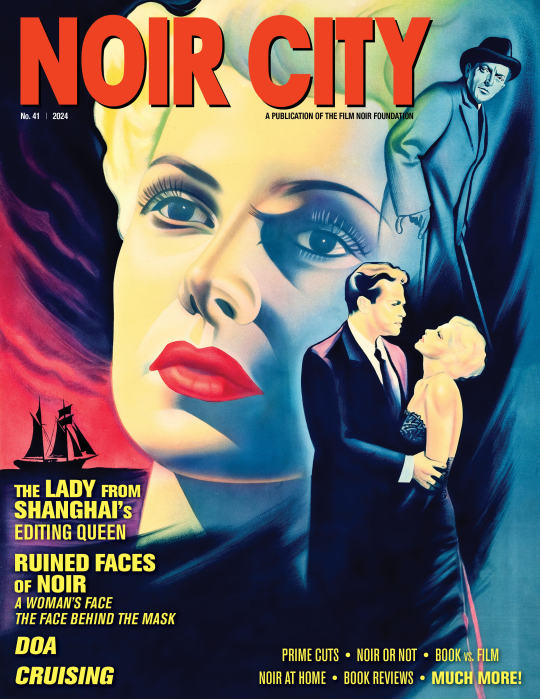
Everyone who donates $20 or more and signs up on our e-mail list, will automatically receive the digital version of NOIR CITY e-magazine for a year! What do Viola Lawrence, William Friedkin, Morris Lipsius, Rose Glass, Peter Lorre, Kyle MacLachlan, Jean Gabin, The Lady from Shanghai, Cruising, Finger Man, D.O.A., and Love Lies Bleeding all have in common? They are all discussed in the latest issue of NOIR CITY, the world’s greatest magazine devoted to our favorite subject, film noir.
Your donations help the FNF locate, restore, and exhibit films that, without our intervention, would be lost forever.
Already a NOIR CITY subscriber?
We have drawings for you too!
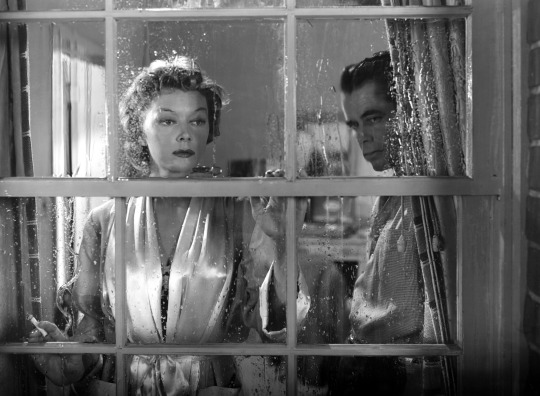
Three separate $20 donors will receive either the Criterion DVD release of The Asphalt Jungle (1950), a Criterion Blu-ray of Bound (1996) starring Jennifer Tilly and Gina Gershon, or the FNF restoration Blu-ray/DVD of Too Late for Tears (1949).
For $60 donations, a winner in a random drawing will receive the Criterion Blu-ray release of Thelma & Louise (1991) starring Susan Sarandon and Geena Davis, illustrator Graham Chaffee’s To Have and To Hold, and the NOIR CITY Experience book about the first twenty years of the NOIR CITY film festival.
For $75-100 donations, a winner in a random drawing will receive the new Blu-ray release of Kino Lorber’s Film Noir: The Dark Side of Cinema XVII with Edward G. Robinson films Vice Squad (1953), Black Tuesday (1954), and Nightmare (1956); the Flicker Alley Blu-ray/DVD release of the FNF’s latest restoration No abras nunca esa puerta (1952 - Argentina); and a copy of Eddie Muller’s The Distance.
For $125+ donations, one winner in a random drawing will receive a Gloria Grahame trio – Human Desire (Kino Blu-ray Special Edition), Odds Against Tomorrow (Kino Blu-ray Special Edition), and In a Lonely Place (Criterion DVD); the Flicker Alley Blu-ray/DVD release of the FNF’s restoration El vampiro negro (1953 - Argentina); the about-to-be-published NOIR CITY Annual 16 (releasing September 2024); and the NOIR CITY Experience book – 20 years of the NOIR CITY film festival.
For a shot any of these goods, make your donation to the FNF between now and September 5. Your name will be entered into the random drawings for your donation amount. All winners will be announced on Tuesday, September 10, on the FNF's NEWS page.
#noir city#noir city magazine#gloria grahame#film restoration#film noir foundation#eddie muller#flicker alley
12 notes
·
View notes
Text
tagged by @marcusagrippa whom i respect very much and will gladly keep gilgafluencing 😈
last book i read: stephen mitchell's and herbert mason's verse narratives of gilgamesh 👍 read one after the other in three days
book i recommend: erich maria remarque's all quiet on the western front. broke me. the horses were crying guys. they were crying
book i couldn't put down: too manyyy but i'd like to recommend gabriel garcia marquez's memories of my melancholy whores. was concerned at first but by the end i had a good laugh and also a fun introspective reflection
book i've read twice: hmm again too many! im a rereader! the last book i reread this past year was homer's odyssey. also, s. e. hinton's the outsiders!
a book on my tbr: dostoyevsky's the brothers karamazov has been on my tbr for an embarrassing amount of time ☹️
a book i've put down: as of now, jean-paul sartre's nausea. previously, embarrassingly, donna tartt's the secret history, though i ended up finishing it and loving it last year
a book on my wishlist: charles robinson's the original frankenstein with mary shelley's original draft and percy bysshe shelley's amended version <3 also a physical copy of caroline alexander's iliadddd
a favourite book from childhood: morris gleitzman's once ☹️ broke my little ten year-old heart. or minfong ho's the clay marble, which is about post-khmer rouge cambodia.
a book you would give to a friend: stefan zweig's chess! excellent and quick read 👍 had to read it twice for Experience
a book of poetry/lyrics you own: richard siken's crush! i saved up for it. also a delightfully explicit and taboo poetry collection by a local author that i shan't disclose :')
a non-fiction book you own: hmm do thucydides and plutarch count? otherwise i suppose maya angelou's memoir i know why the caged bird sings
currently reading: quite a few! lucan's pharsalia (jwj), virgil's aeneid (frederick ahl), gilgamesh (stephanie dalley), allen mason ward's marcus crassus and the late roman republic <- last one's on a bit of a pause
planning on reading next: oh god i probably won't stick to this list at all but as of Now! -> melville's moby dick and a. w. lintott's violence in republican rome
tagging: @xxmarvelouslifexx @pomp-quio @transbutchblues but no pressure!!
#this was fun and also quite terrible at the same time. confronting my stupid tbr#i thought tsh was sooo pretentious and irritating but i forgot. that i am also a bit Like That#you guys WANT to read the clay marble btw. u WANT TO#tag game
5 notes
·
View notes
Text
Best Albums of 2019
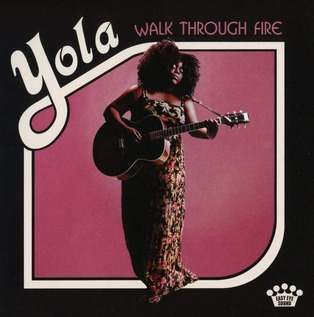
Top 10:
"Jaime," Brittany Howard.
"In the Morse Code of Brake Lights," The New Pornographers.
"Between the Country," Ian Noe.
"Mint Condition," Caroline Spence.
"While I'm Livin'," Tanya Tucker.
"Father of the Bride," Vampire Weekend.
"Remind Me Tomorrow," Sharon Van Etten.
"Titanic Rising," Weyes Blood.
"Legacy! Legacy!" Jamila Woods.
"Walk Through Fire," Yola.
Honorable mention:
"U.F.O.F." Big Thief.
"Assume Form," James Blake.
"Shepherd in a Sheepskin Vest," Bill Callahan.
"This Land," Gary Clark, Jr.
"In Search of the Miraculous," Desperate Journalist.
"Magdalene," FKA Twigs.
"thank u, next," Ariana Grande.
"Terms of Surrender," Hiss Golden Messenger.
"On the Line," Jenny Lewis.
"Cuz I Love You," Lizzo.
"Stronger Than the Truth," Reba McEntire.
"Blood," Allison Moorer.
"Saves the World," MUNA.
"Songs of Our Native Daughters," Our Native Daughters.
"Pony," Orville Peck."
Jimmy Lee," Raphael Saadiq.
"Dépaysé," Sinkane.
"Sound & Fury," Sturgill Simpson.
"Eraserland," Strand of Oaks.
"Miss Universe," Nilüfer Yanya.
Songs:
"Almeda," Solange.
"Ain't Got No Money," Justin Townes Earle.
"Bad Case," Lukas Nelson & Promise of the Real.
"Bags," Clairo.
“Bible and a .44," Trisha Yearwood.
"Black Patch," Kelsey Waldon.
"Blazing Highway Home," Josh Ritter.
"Blume," Nerija.
"The Bones," Maren Morris.
"A Boy Is a Gun," Tyler, the Creator.
"Burning," Maggie Rogers.
"Bus Route," Tyler Childers.
"Calliope," Cassius.
"Caught on the Inside," Ten Fé.
"Cheap Silver," Mike & the Moonpies.
"Cheatin' Songs," Midland.
"Circle Game," Pink.
"Count on Me," The Lone Bellow.
"Cruel Summer," Taylor Swift.
"Dark and Handsome," Blood Orange.
"Dark Places," Beck.
"The Daughters," Little Big Town.
"Delta Line," Emily Scott Robinson.
"Desert Man," Bat for Lashes.
"Don't Feel Like Crying," Sigrid.
"Estrella," Cass McCombs.
"Far from Home," Aubrie Sellers.
"Father," Robert Ellis.
"Fixture Picture," Aldous Harding.
"Freelance," Toro y Moi.
"Ghost," Kaina.
"Gone," Charli XCX.
"Gonna Write Me a Letter," Rhiannon Giddens/Francesco Turisi.
"Good Scare," TORRES.
"The Greatest," Lana Del Rey.
"Hallelujah," HAIM.
"He," Jai Paul.
"Heavy on My Mind," Mavis Staples.
"Hello Sunshine," Bruce Springsteen.
"Hey, Bus Driver!" Tami Nielsen.
"Hey, Ma," Bon Iver.
"Hold On," Aimee Mann.
"Hot Air Balloons," Tank and the Bangas.
"Hot Girl Summer," Megan Thee Stallion.
"Human Question," The Yawpers.
"Hungry Child," Hot Chip.
"Hurry on Home," Sleater-Kinney.
"Hurt," Gallant.
"I Don't Wanna Ride the Rails (No More)," Vince Gill.
"In the Capital," Rolling Blackouts Coastal Fever.
"Incapable," Roisin Murphy.
"It's Time," Leonard Cohen.
"Jesus & Elvis," Hayes Carll.
"Lark," Angel Olsen.
"Light Years," The National.
"Lonely As You Are," Charles Bradley.
"Loose Change," Highwomen.
"Lovestained," Hope Tala.
"Lying Down," Celine Dion.
"Messed with My Mind," Molly Tuttle.
"Midnight Sun," Calexico/Iron & Wine.
"Mirage," Jessie Ware.
"Mirror in the Sky," Peaking Lights.
"Mother's Mother's Magazines," Cate le Bon.
"Nighttime Drive," Jay Som.
"No Bullets Spent," Spoon.
"On the Edge of Time," Jens Lekman.
"One More Song to Write," Willie Nelson.
"One Night Standards," Ashley McBryde.
"Open Book," Kalie Shorr.
"Patience," Tame Impala.
"A Perfect Wife," Frank Turner.
"Runner," Tennis.
"The Seduction of Kansas," Priests.
"Send Me a Postcard," Bob Mould.
"Shine a Little Light," The Black Keys.
"Sisyphus," Andrew Bird.
“Solid Ground," Michael Kiwanuka.
"Someone Else," Emotional Oranges.
"Sparrow," Emeli Sandé.
"Starry Night," Peggy Gou.
"Stay with Me," Hatchie.
"Suge," daBaby.
"Talk," Khalid/Disclosure.
"Tell the World I Do," Dee White."
That's Just the Way I Feel," Purple Mountains.
"The Thing That Wrecks You," Lady Antebellum w/ Little Big Town.
"Track Record," Miranda Lambert.
"Used to Be Lonely," Whitney.
"Virile," Moses Sumney.
"Want You in My Room," Carly Rae Jepsen.
"War in My Mind," Beth Hart.
"Water Me Down," Vagabon.
"Weeping Willow," Ruston Kelly.
"Where I Come From," Patty Griffin.
"Working on a Song," Todd Snider.
"Xanny," Billie Eilish.
"Yellow Cloud," Trixie Mattel.
"You've Got Other Girls for That," Lillie Mae.
"Young Enough," Charly Bliss.
7 notes
·
View notes
Text
Comics read this past week:
Fawcett Comics:
the Captain Marvel stories in Whiz Comics (1940) #48-49 and in Captain Marvel Adventures (1941) #29-30
With these Captain Marvel stories I went from November 1943 to December 1943. There is one Captain Marvel story per issue of Whiz Comics and four per issue of Captain Marvel Adventures for a total of ten Captain Marvel stories read in this batch. These stories ranged from eight to fourteen pages.
The stand-out story from this batch was "Pin-Up Boy" from Whiz Comics #48, which was drawn by C.C. Beck but the writer of which is unknown. It had Captain Marvel agree out of patriotic duty to take and send out pin-up pictures of himself to WACS (members of the Women's Army Corps), WAVES (Women Accepted for Volunteer Emergency Service), and SPARS (members of the Women's Reserve of the United States Coast Guard). One of the letters that was sent to him asking for his picture called him "the Man-I-Would-Most-Like-To-Be-Marooned-With-On-A-Deserted-Island." Another asked for a lock of his hair. This all goes awry due to a Nazi plot, but before that there's a nice scene where Billy Batson and Mary Batson hang out and it's revealed that Mary Marvel was actually already a pin-up girl for the men off fighting and then Captain Marvel and Mary Marvel end up doing a tour of the camps where they each get more attention depending on the gender make-up of the people they're visiting.
I want to note the story "The Reform of Roughneck Ryan" from Captain Marvel Adventures #29, the creators of which are unknown, for it's strong pro-police messaging.
I appreciated both the story "The Beautiful Baby Contest" from Captain Marvel Adventures #29- which was written by Robert Kanigher but the artist of which is unknown- and the story "The Modern Robinson Crusoe" from Captain Marvel Adventures #30- which was plotted by Henry Lynne Perkins, scripted by Otto Binder, and drawn by the C.C. Beck Shop- for their emphasis on how important Billy's job is to him. The former had Billy repeatedly delayed in getting to an event that he's meant to broadcast because he kept having to turn into Captain Marvel, which was very frustrating for him. Then the event itself is a bit tricky for him as he has to deal with a bunch of finicky babies. The second story had Billy and Mr. Morris hear about a man's experience being marooned on an island alone, to which Billy's immediate reaction is what a good radio broadcast that experience would have made. It's then arranged for Billy to be purposefully marooned on an island with radio equipment and a copy of the book Robinson Crusoe so that he can go through all that himself and broadcast about it as he experiences it. Of course, it turns out that there are scheming Nazis on the island.
Also the story "Captain Marvel and the Baron of Barracuda Bay" from Captain Marvel Adventures #30, the creators of which are unknown, brought back Billy's girlfriend Cissie Summerly who we hadn't seen in awhile.
the Mary Marvel stories in Wow Comics (1940) #51-52 and in Mary Marvel (1945) #8-9
With these Mary Marvel stories I went from December 1946 to March 1947. There is one Mary Marvel story per issue of Wow Comics and four per issue of Mary Marvel for a total of ten Mary Marvel stories read in this batch. These stories ranged from seven to eleven pages.
I liked the story "The Riddles of Death" from Mary Marvel #8, which was written by Otto Binder and drawn by Jack Binder, as it was a team-up between Mary Marvel and Bulletgirl. The initial premise that brought these two characters together for the story was that Susan Kent, Bulletgirl, was attending Mary's school graduation.
The story "Captain Cligh's Treasure" from Mary Marvel #8, which was written by Bill Woolfolk and drawn by Jack Binder, really stood out to me because part of the plot had Mary Batson disguise herself as a boy. The imagery of Mary-Batson-disguised-as-a-boy transforming into the feminine Mary Marvel and then back into her masculine persona has really stuck with me.
The story "The Trojan Horse Mystery" from Mary Marvel #9, which was drawn by Jack Binder but the writer of which is unknown, was a team-up between Mary Marvel and Pinky, Mr. Scarlet's sidekick, which is a pair I always enjoy together.
And the story "Her Thrilling Birthday Party" from Mary Marvel #9, which is tentatively credited as to be drawn by Jack Binder but the writer of which is unknown, stood out because it had overlapping plot elements with the story "Captain Marvel's Birthday" in Whiz Comics #47, which was drawn by C.C. Beck but the writer of which is unknown. The Mary story had Mary Marvel all dejected because she didn't have a birthday and so couldn't have birthday parties, but then a friend of hers throws her one anyway, and the Captain Marvel story had that same sequence of events occur.
the Captain Marvel Junior stories in Master Comics (1940) #32-33 and in Captain Marvel Jr. (1942) #1-2
With these Captain Marvel Junior stories I went from October 1942 to November 1942. There is one Captain Marvel Junior story per issue of Master Comics and four per issue of Captain Marvel Jr. for a total of ten Captain Marvel Junior stories read in this batch. These stories ranged from ten to seventeen pages. There was also a bonus 3-page retelling of Freddy's origin story as Captain Marvel Junior from Whiz Comics #25 at the beginning of Captain Marvel Jr. #1.
This was me just getting back into reading Junior's stories after not having read any for a good while. As you can see from the dates here that I'm not nearly as far along in his solo stories as I am in Cap or Mary's. There were some things that stood out to me content-wise, like the role Freddy's disability played to connect the character to more serious and darker events than either Billy or Mary experience, but I'm not yet in a real serious mindset with this character and what was most impactful for me was Mac Raboy's lovely art.
Fiction House:
the Camilla, Queen of the Lost Empire, stories in Jungle Comics (1940) #1-9
With these Camilla stories I went from October 1939 to July 1940, which is only the beginning of her character as she was published all the way through Jungle Comics (1940) #150 to June 1952.
The stories in issues #1-4 were drawn by Chuck Winter. I loved the art style here and it made me write down Chuck Winter's name as an artist I want to read more work of. The first story follows a structure I'm familiar with: normal man (scientist, explorer, soldier of some kind, etc.) comes across a hidden kingdom, is captured, queen immediately wants to marry him, he rejects her because she is evil and/or because he is interested in someone else, conflict. I was pretty satisfied with how this was all executed in this story, other than that Camilla dies at the end. The second story acts as a sort of soft reboot to the first story, the differences being: the normal man Jon Dale is renamed to John Stanley, he goes from being a scientist who is looking for a lost empire in the jungle to a captain who was traveling through the jungle with a cargo of ivory and is attacked out of nowhere by the kingdom, the lost empire is changed from Norsemen who had found the secret to eternal life to the descendants of Genghis Khan, and there are no other regular outsider humans at the empire in the second story meaning that Jon/John's other love interest and the human sacrifice part of the plot was removed. Then the third story sort of rejects all of the changes and goes back to the version in the first story other than that it takes the ending of the second story where Camilla survived but her empire was destroyed. The third and fourth stories take Camilla from being enemies with Jon and his love interest Ruth to being friendly with them and a kinder ruler to her people.
The stories in issues #5-9 were drawn by Bob Powell and were also clearly written by a different person as well. I have really liked some of Bob Powell's work before but not always and didn't particularly enjoy it here. It seems to me that he has pretty different eras were his art looked differently depending on where he was working and who he was working under. These stories follow the adventures of Camilla as a heroic character. The first introduces a scheming Count character who wants to take over Camilla's position as ruler. Then we see him force a ostracized deaf hunchback named Caredodo to attempt to assissinate Camilla, things go awry and Camilla saves the deaf Caredodo from a danger he couldn't hear coming not knowing that he was intending to kill her, Caredodo then turns on the Count and kills him, Camilla surmises what happens and pardons Caredodo, the two of them go on adventures as Camilla trusts Caredodo the most, on an adventure Camilla gets a magical wish and she uses it to transform Caredodo into a handsome knight and renames him Sir Charming, and the rest of the stories are the adventures of Camilla and Sir Charming.
Centaur Publishing:
the Skyrocket Steele stories in Amazing Mystery Funnies (1938) #2-3b and in Amazing Mystery Funnies (1939) #1 and #3-5
These stories, which are all that are available to me of Skyrocket Steele, went from September 1938 to May 1939. What’s missing is a 4-page story in Amazing Mystery Funnies (1939) #3 and a 5-page story in Amazing Mystery Funnies (1939) #6. All of these stories were drawn and presumably also written by Bill Everett. I read them reprinted in The Bill Everett Archives volumes 1 and 2.
I read these out of an interest in checking out Bill Everett's art and they succeeded in making me interested in checking out more of his work. What was particularly great was the brushwork on the people he drew and some of the more detailed backgrounds, though this is very early in his career and I don't think that these two strengths were consistently meshed together well. I want to note that the first story here had a long thing established shot of the landscape at the beginning of every page except for the first page which I thought was a really interesting technique. The writing of these stories really reflected how early this was in his career and for original work in comic books in general. It's my understanding that the general approach for early comics was to try to make this appealing and so somewhat understandable even if a young child couldn't read the words, but that was not an influence here. Many of these stories seemed to be one long extended conversation.
While characters narrating their own actions- whether they have another character with them to talk to and justify that or not= is a staple, the 6-page story in Amazing Mystery Funnies (1939) #3 took that to a poorly-executed extreme. For example, in one panel in it Sari says "Let's see, now- I'd better take a gun along- might run into trouble- the goggles will serve as a mask, and I'll wear a cloak, too." That the character is grabbing a gun and putting on a cloak is something that can just be drawn, a character doesn't need to explain what actions they're doing. And as for explaining her actions to the audience, that she thinks she might run into trouble is communicated by her taking a gun, and she takes off the goggles before she ever comes across another person so them being intended as a disguise is unnecessary information. This panel could have been textless. And this is a feeling that carries throughout this story, that there's dialogue for the sake of there being dialogue but without any understanding of what narration like this is actually used for. Or that the script of the story was being put into the dialogue.
And the 5-page story in Amazing Mystery Funnies (1938) #2 was largely a meeting to discuss the mission that the main characters go on in the last few panels and I, even as an adult, found the conversation difficult to follow. It was going through all of the intricacies of this conflict and seemed to be trying to get all of the worldbuilding done right at the beginning but did not really succeed in communicating anything that couldn't have been done much more succinctly.
Eternity Comics:
the Dan Turner, Hollywood Detective, stories in Spicy Tales (1988) #15-19
There were five 8-page Dan Turner, Hollywood Detective stories reprinted from the December 1949 and February 1950 issues of Hollywood Detective, a 1950 issue of Hollywood Detective that the month of publication of is unknown, Crime Smashers (1950) #14 (which was published in January 1953), and Crime Smashers (1950) #15 (which was published in March 1953). Presumably all of these stories were written by the character's creator Robert Leslie Bellem. The story from the December 1949 issue of Hollywood Detective was drawn by Adolphe Barreaux, the story from the February 1950 issue was drawn by Robert McCarty, the story from the unspecified 1950 issue was drawn by Max Plaisted, and the story from Crime Smashers (1950) #15 was drawn by Tony Tallarico. The artist of the story from Crime Smashers (1950) #14 is unknown but it was an adaptation of a text story from the March 1943 issue of Hollywood Detective. The stories printed in Crime Smashers were presumably actually first printed in a pulp magazine and then reprinted there.
Dan Turner's stories were never particuarily interesting out of all of the ones reprinted in Spicy Tales. I'll note that the structure of his stories was always pretty similar as he had the limiting character premise of being a detective that solved murder cases on movie sets, so he would generally be on a movie set for whatever reason, get introduced to the various relevent characters and their conflicts with one another, then see someone die in a scene filming gone wrong, and then be the one who figures out who did it.
But there was one story in this batch that made an impression on me, the one from the Hollywood Detective issue from an unknown month of 1950. The 'good girl art' in it came from that the movie starred a woman who was incredibly modest and would never be pictured in anything revealing, so the director tricks her into filming a scene in water in which she's covered in grease that he's secretly diluted so that it'll all wash away in the water, which she's subequently horrified by and begs for something to cover herself with while also threatening to kill any man that looks at her, and then rips off the clothes of a woman she incorrectly blamed for the incident. What I actually really liked about this story is how the two women end up coming together and plot to get the tape of that scene back from the director even if it means they have to kill him, and then when they stumble upon Dan Turner with the director's dead body they assume he killed him to help them and promise to never tell anyone he did it.
the Gail Ford, Girl Friday, stories in Spicy Tales (1988) #15 and #17-18 and #20
There was one 8-page Gail Ford, Girl Friday, story reprinted from the May 1950 issue of Super Detective, two 7-page stories reprinted from the December 1949 issue of Super Detective and Crime Smashers (1950) #4 (which was published in April 1951), and one 6-page story reprinted from Crime Smashers (1950) #14 (which was published in January 1953). The story from the December 1949 issue of Super Detective was written and drawn by Pierre Charpentier and the one from the May 1950 issue was written and drawn by Keats Petree. The creators from the stories reprinted from Crime Smashers, which were presumably actually first printed in a pulp magazine and then reprinted there, are unknown.
I want to note that Gail Ford, while described as an assistant in the title of her stories, is usually portrayed as essentially a female police officer who specializes in undercover work that male police officers can't do, and that I credit her being called an assistant as being because women presumably couldn't really be police officers like that back then, but the story from Crime Smashers #14 actually portrays her as a police inspector's assistant that's trying to get involved with things outside of her job responsibilities. She works the case behind the police inspector's back and works to not get caught by him doing so until she's solved it, though she's added in her sleuthing process by the fact that she's allowed indiscriminate access to the crime scene because of her affiliation with him. Other stories have her assigned cases to work, which is presented in a way as though it's not an unusual occurrence. The story from the December 1949 issue of Super Detective actually has her mention that she takes gymnastics lessons at the police academy.
the Sally the Sleuth stories in Spicy Tales (1988) #15-20
There were six 2-page Sally the Sleuth stories reprinted from the October 1938, February 1939, August 1939, September 1939, June 1940, and July 1940 issues of Spicy Detective. All were written and drawn by the character's creator Adolphe Barreaux.
Despite the fact that these stories were all done by the same person who'd done all the previous Sally stories, some of the ones from later in the decade felt a bit off. The art was just a bit different and the stories departed from Sally's usual structure. Like, the story from the October 1938 issue of Spicy Detective was standard: Sally goes somewhere to investigate a possible crime, gets caught, her clothes are subsequently get ripped off, and then she gets rescued. But the story from the July 1940 issue had her kidnapped after seeing a crime while on vacation and trying to stop it in the underwear she was wearing at the time as it was night. And the story from the June 1940 issue had her kidnapped by her home to use as a hostage to demand a ransom of freeing a criminal that she and the Chief helped catch. Though I want to note that in that October 1938 issue that Sally manages to get away from the criminal on her own, unusually competent for her, and the rescuing was her being picked up from the ocean as the getting away meant jumping off of the ship she had been investigating on. I also want to note the story from the September 1939 issue as it really stood out to me. It has Sally get her clothes ripped off, and not get her outerwear but her underwear too, which has happened before, but this time rather than depicting her topless (bare crotches are never shown) her body subsequently goes offscreen with her limbs reaching into view as she fights a man while naked. I assume that the hesitance to show her bare boobs comes from the increasing censorship pressures that happened over time.
And there was one 5-page Sally the Sleuth story reprinted from Crime Smashers (1950) #10 (which was published in May 1952), one 8-page story from Crime Smashers (1950) #14 (which was published in January 1953), and two 7-page stories from the February 1950 and March 1950 issues of Private Detective. The story from the two Private Detective issues were written and drawn by Jerry Altman; the rest of the creators are unknown.
These stories were also a bit unusual for Sally. The ones from Crime Smashers #14 and the February 1950 issue of Private Detective seemed pretty experimental. The former had Sally and the Chief work a case where a man is convinced that a cat-person he's seeing in his dreams is going to manifest and kill him, only to learn that it was a woman trying to make him seem crazy so that she could kill his wife, pin it on him but have him found innocent due to insanity, and then marry him. What was really strange about this was the prominent cat-person imagery. And then that other story also tried to create suspense with the characters in one apartment the whole time where there's a mysterious possible murderer lurking about- which turns out to be a man hiding in a stuffed lion- but it didn't really work because the characters behaved unbelievably, like the Chief being found knocked unconscious and then the characters don't react properly to that so they can stay in that enclosed setting and ponder what's going on rather than take any actions that would actually impede the killer and so the story. I also want to note that the story from the March 1950 issue of Private Detective also had the character Peanuts in it, who frequently appeared in Sally's stories in the 30s and who I hadn't seen since one story from the early 40s. He's portrayed a bit differently in this one though, as a kid who just happened to know Sally and the Chief and tagged along with them, rather than an assistant who worked with them on cases regularly.
the Diana Daw stories in Spicy Tales (1988) #15-19
There were five 2-page Diana Daw stories from the July 1938, September to November 1938, and January 1939 issues of Spicy Adventure. All were written by Clayton Maxwell and drawn by Max Plaisted.
Daina Daw started out as my least favorite strip reprinted in Spicy Tales and now it's the one that I'm genuinely very sad to have end. It's not that I'm particularly attached to the character but I became very invested in how the writing- and, strangely, the world- evolved. What made the early Diana Daw stories so off-putting was the prominent racist caricatures but as the strip went on the reliance on stereotypes created a weird fantastical effect where the character was trapped in these fairy tale-like repeated loops in a warped and unrealistic world. I'm very interested in how one could create a similar effect without the use of racist stereotypes.
In this last batch of stories we see a more clearly how the writing has evolved in that the character isn't confided to one space for too long. Previously we've seen her kept in an area until the same plots with the same stereotypes become about too played out and then she's moved to a new place where there's new stereotypical tropes to be used. But here we got the conclusion to the relatively short China section and Diana and Ted are moved to Russia. It was almost strange to see ultimately few stories of Diana's spy work there after so many harem plots in India. In Russia we had Ted sentenced to imprisonment in a Siberian ore mine and Diana allowed passage back to the U.S. which is what she's been working towards since the very start of her trip, but not wanting to abandon Ted she escapes from her plane on her way there, unsure of what country she's ended up in now, with the intention of working her way back to Ted to somehow rescue him. It's sad to see the strip end on a cliffhanger, particularly when I'm pretty sure there were stories published after this point that just didn't get reprinted in this series, but it's also nice to end on a note that demonstrates how much Diana's journey has changed her over the years. She also accomplishes part of her goals through intentional seduction, something we saw her learn over time. We got a bit of a backstory for her for the first time, as this final reprinted story reveals that she's the daughter of a senator and millionaire manufacturer who has recently died, which left Diana all of his riches.
the Ray Hale, News Ace, stories in Spicy Tales (1988) #16-17 and #19
There were two 8-page Ray Hale, News Ace, stories from the December 1949 and May 1950 issues of Super Detective and one 5-page story from Crime Smashers (1950) #14 (which was published in January 1953). The story from the May 1950 of Super Detective was written and drawn by Ken Battefield and the one from the December 1949 issue was written and drawn by Newton Alfred. The writer for the story reprinted from Crime Smashers #14, which was presumably actually first printed in a pulp magazine and then reprinted there, is unknown; but the artist was H.C. Kiefer.
Nothing particularly exciting in this batch other than I'll note that two of these three stories really diverged from the generic detective story structure and one had a premise that I thought was actually fitting for a character that's presented as a reporter who simply gets more involved in cases than typical reporters when most of these types of characters are, in my experience, portrayed essentially interchangeably with police officers, private detectives, assistants of police officers or private detectives, district attorneys, assistant district attorneys, etc.
the Fighting Bob Dale story in Spicy Tales (1988) #20
This was an 8-page Fighting Bob Dale story, written and drawn by Robert McCarty, reprinted from the April 1950 issue of Fighting Western. This was this character's one and only story reprinted in Spicy Tales and it wasn't very interesting to me.
the Lariat Lucy story in Spicy Tales (1988) #20
This was an 8-page Lariat Lucy story, written and drawn by Rex Maxon, reprinted from the April 1950 issue of Fighting Western. This was this character's one and only story reprinted in Spicy Tales and what stood out to me the most about it was that there were two available men to come in and be the hero, Lucy's sheriff father and her boyfriend who is shown to be good in a fight and to want to involve himself when he sees wrongdoing, but at the end it's Lucy who solves the mystery and cleanly defeats all of the bad guys on her own. This was really surprising to me as I was expecting her, as I've seen many times in other stories in Spicy Tales, to get captured and then rescued.
2 notes
·
View notes
Text
accumulated book list; (unowned) 𓇢𓆸

- [ ] the body where I was born by Guadalupe Nettel
- [ ] a personal matter by Kenzaburo Oe
- [ ] shame in the blood by Tetsuo Miura
- [ ] nw by Zadie Smith
- [ ] tender by Ariana Harwicz
- [ ] shantarm by Gregory David Roberts
- [ ] second place by Rachel Cus
- [ ] bluets by Maggie Nelson
- [ ] devotions by Mary Oliver
- [ ] black swans by Eve Babitz
- [ ] perfume by Patrick Suskind
- [ ] a certain hunger by Chelsea G. Summers
- [ l ] time is a mother by Ocean Vuong
- [ ] assembly by Natasha Brown
- [ ] butter by Asako Yuzuki
- [ ] carmilla by Sheridan Le Fanu
- [ ] boulder by Eva Baltasar
- [ ] permafrost by Eva Baltasar
- [ ] discipline and punishment by Michel Foucault
- [ ] black reconstruction by W.E.B Dubiou
- [ ] a poets notebook by Paul Valery
- [ ] die my love by Ariana Harwicz
- [ ] swimming in the dark by Tomasz Jedrowski
- [ ] timecode of a face by Ruth Ozeki
- [ ] into the wild by Jon Krakauer
- [ ] the wind up bird chronicle by Murakami
- [ ] theory of the lyric by Jonathan Culler
- [ ] orality and literacy by Walter J. Ong
- [ ] the soundscape by Murray Schafer
- [ ] listening and voice by Don Idhe
- [ ] the poetics of french verse by Clive Scott
- [ ] the poetics of space by Gaston Bacherlard
- [ ] housekeeping by Marilyn Robinson
- [ ] the white book by Han Kang
- [ ] americanah by Chimamanda Ngozi Adichie
- [ ] poor deer by Claire Oshetsky
- [ ] pushout by Monique W. Morris
- [ ] agua viva by Clarice Lispector
- [ ] foggy mountain breakdown by Sharyn Mccrumb
- [ list two ] ☼
bought = b | loaned = l , read = x | reading = …
1 note
·
View note
Text
Birthdays 1.31
Beer Birthdays
William Hoffmeister (1827)
George Hauck (1832)
William Wenzel (1854)
Five Favorite Birthdays
Connie Booth; actor, "Monty Python" (1944)
Don Hutson; Green Bay Packers WR (1913)
Terry Kath; rock guitarist, "Chicago" (1946)
Grant Morrison; comic book artist (1960)
John O'Hara; writer (1905)
Famous Birthdays
Shirley Babashoff; swimmer (1957)
Tallulah Bankhead; actor (1903)
Ernie Banks; Chicago Cubs 1B (1931)
Eddie Cantor; actor, singer (1892)
Carol Channing; actor, singer (1923)
Vernon Davis; San Francisco 49ers TE (1984)
Minnie Driver; actor (1970)
Joanne Dru; actor (1922)
James Franciscus; actor (1934)
Dick Gephardt; politician (1941)
James Gibbons Huneker; music critic (1860)
Philip Glass; composer (1937)
Zane Grey; writer (1872)
Bobby Hackett; trumpeter, bandleader (1915)
Mario Lanza; singer, actor (1921)
Anthony LaPaglia; actor (1959)
Alan Lomax; musicologist (1915)
Kelly Lynch; actor (1959)
Norman Mailer; writer (1923)
Charley Musselwhite; blues musician (1944)
Phil Manzanera; rock musician (1951)
Robert Morris; signer of the Declaration of Independence (1734)
Anna Pavlova; dancer, choreographer (1882)
Suzanne Pleshette; actor (1937)
Theodore Richards; chemist (1868)
Jackie Robinson; Brooklyn Dodgers 2B (1919)
Portia de Rossi; actor (1973)
Johnny Rotten; punk singer (1956)
Nolan Ryan; New York Mets P (1947)
Franz Schubert; composer (1797)
Jean Simmons; actor (1929)
Justin Timberlake; singer (1981)
Patricia Velasquez; model, actor (1971)
Jessica Walter; actor (1940)
Ken Wiilber; writer (1949)
0 notes
Text
Books I read for the first time in 2023:
As per always, unfortunately I did not get around to reading nearly as much as I'd like, and recommended/my favourite books of the year are bolded.
Fiction:
American Royals Series - Katherine McGee
Internment – Samira Ahmed
Maggie’s Going Nowhere - Rose Hartley
My Policeman – Bethan Roberts
Precious You - Helen Monks Takhar
Sisterhood of the Travelling Pants Series - Ann Brashares
The Midnight Library – Matt Haig
The Other People - C.J. Tudor
The Wind and The Willows - Kenneth Grahame
This Is How You Lose The Time War – Amal El-Mohtar
Non fiction/Based on a true story:
Chasing Wrongs And Rights – Elaine Pearson
From A Native Daughter – Colonialism and Sovereignty in Hawai'i – Haunami-Kay Trask
How Many More Women – Jennifer Robinson and Keina Yoshida
Not Now, Not Ever: Ten Years On From The Misogyny Speech – Julia Gillard et al
Spare – Prince Harry
The Light We Carry – Michelle Obama
The Tattooist of Auschwitz - Heather Morris
The Woman In Me – Britney Spears
#about me#reading#books#i'd like to pretend like i will add to this but i've got a busy few days so chances are this is it
1 note
·
View note
Text
I was in my late 30s—”old” by Gen Z standards when I began working on my Ph.D. at the ANU Research School of Pacific and Asian Studies (RSPAS). During its heyday, it was the top research and postgraduate training center in Australia for studying the Asia Pacific region. It focused on Northeast Asia, Southeast Asia, South Asia, and the Southwest Pacific as its main research areas.
Being an RSPAS student was a unique and memorable experience. The school was renowned for its exceptional faculty, cutting-edge research, and vibrant academic community. Its roster of distinguished faculty members included James J. Fox, Katherine Gibson, Paul Hutchcroft, Robin Jeffrey, Ben Kerkvliet, Brij K. Lal, Sir Anthony Low, Andrew Pawley, Kathryn Robinson, Tessa Morris Suzuki, and Wang Gungwu, to name a few.
One cannot discuss RSPAS without mentioning the iconic Coombs Building, its headquarters. It was named after ANU Chancellor (1968-1976) Herbert Cole Coombs, which consisted of three hexagonal structures connected. Though frequently described as notoriously difficult to navigate, it was expertly crafted by the highly-regarded Mockridge, Stahle, and Mitchell firm from 1960 to 1969.
For RSPAS students, Coombs provided an unparalleled platform for studying. For instance, Ph.D. scholars had their own office, fully equipped with a computer and free Wi-Fi, access to resources of top universities worldwide (I borrowed books and periodicals from US, Japanese, and UK universities through the ANU Chifley and Menzies libraries), book and storage cabinets, study desks, and chairs. During my last year at the university, I was in Coombs, writing and rewriting my dissertation from 11:00 a.m. to 5:30 a.m. Whenever I got hungry, I had access to the pantry with bottomless cookies, coffee, and tea. There are vending machines inside the building. And many coffee shops, canteens, and restaurants nearby. When my brain cells got weary, I walked around Lake Burley Griffin, parts of which are located within the university. Throughout my Ph.D. journey, there were dozens of conferences, seminars, and workshops at Coombs daily, always encouraging professors, younger academic staff, visiting luminaries, and students to engage with each other. Whether one is merely passing through the main lounge for a quick coffee break or bumping into colleagues, every nook and corner of the building provided its denizens with numerous occasions for understanding the diverse literatures, cultures, societies, politics, and economies of the Asia-Pacific region. Over the years, many had graced its corridors, soaking up wisdom and shaping their futures within its iconic walls. Many of my schoolmates fondly remember the countless hours spent studying, engaging in lively debates, and forming lasting friendships in its communal spaces. For me, it was not only a symbol of academic excellence but also a hub of intellectual discourse and collaboration.
However, in 2010, the year after I officially graduated, the ANU made some organizational changes, which affected the status of RSPAS along with other research schools. As a result, a newly formed College of Asia and the Pacific assumed many responsibilities previously held by RSPAS. I was saddened by such restructuring, making me one of the school’s last few graduates. With the new college in place, my old school has ceased to exist. Two years later, UST Elementary School, where I received my primary education, was shut down, too. It hurt deeply when Emeritus Professor Lal, one of my Ph.D. advisers, wrote to me before he passed on—"Our school is no more."










1 note
·
View note
Text

Aloha, a charity anthology in support of Maui, is now live!
ALOHA is a charity romance collection of swoon-worthy, never-before-seen short stories from over FIFTY of your favorite bestselling authors, all with a twist of Hawaii. All royalties from the collection will be donated to Maui Food Banks and the Maui Fire Relief Fund to help support the survivors of the devastating fires. ALOHA will only be available for a limited time, so one-click your copy before it's gone.
AUTHORS INCLUDE: K.A. Linde, Adriana Locke, Alessandra Torre, Rachel Van Dyken, Willow Winters, Brittainy Cherry, Aleatha Romig, Heidi McLaughlin, Crystal Perkins, Helena Hunting, Jessica Ashley, L.B. Dunbar, Ren Alexander, Skye Warren, Tara Brown, Tia Louise, Diana Peterfreund, Jamie K. Schmidt, Alexandria Bishop, Maria Luis, Kasey Metzger, Julia Kent, Karina Halle, Trilina Pucci, Carly Phillips, Aarti V Raman, Jill Ramsower, Amber Kelly, Eric R. Asher, Julie Leto, Lucy Eden, Kimberly Reese, Lauren Rowe, Pepper Winters, M. Robinson, J.L. Baldwin, Brittany Holland, Angelina M. Lopez, Jiffy Kate, Lex Martin, MJ Fields, Emma Louise, Catalina Snow, Dee Lagasse, Cary Hart, Aly Martinez, Liv Morris, Jay McLean, Jana Aston, Emma Scott
All royalties from this project will be donated to organizations working in Maui to bring relief to the survivors of the Maui fires. We aren't affiliated or endorsed by these charities. We are authors who are helping the best way that we can.
Download today on Amazon, Apple Books, Barnes & Noble, Google Play, and Kobo!
Amazon: https://geni.us/AmazonAloha
Apple Books: https://geni.us/AppleAloha
Nook: https://geni.us/NookAloha
Kobo: https://geni.us/KoboAloha
Google Play: https://geni.us/GoogleAloha
Goodreads: https://bit.ly/3rc8HxS
0 notes
Text

Aloha, a charity anthology in support of Maui, is now live!
ALOHA is a charity romance collection of swoon-worthy, never-before-seen short stories from over FIFTY of your favorite bestselling authors, all with a twist of Hawaii. All royalties from the collection will be donated to Maui Food Banks and the Maui Fire Relief Fund to help support the survivors of the devastating fires. ALOHA will only be available for a limited time, so one-click your copy before it's gone.
AUTHORS INCLUDE: K.A. Linde, Adriana Locke, Alessandra Torre, Rachel Van Dyken, Willow Winters, Brittainy Cherry, Aleatha Romig, Heidi McLaughlin, Crystal Perkins, Helena Hunting, Jessica Ashley, L.B. Dunbar, Ren Alexander, Skye Warren, Tara Brown, Tia Louise, Diana Peterfreund, Jamie K. Schmidt, Alexandria Bishop, Maria Luis, Kasey Metzger, Julia Kent, Karina Halle, Trilina Pucci, Carly Phillips, Aarti V Raman, Jill Ramsower, Amber Kelly, Eric R. Asher, Julie Leto, Lucy Eden, Kimberly Reese, Lauren Rowe, Pepper Winters, M. Robinson, J.L. Baldwin, Brittany Holland, Angelina M. Lopez, Jiffy Kate, Lex Martin, MJ Fields, Emma Louise, Catalina Snow, Dee Lagasse, Cary Hart, Aly Martinez, Liv Morris, Jay McLean, Jana Aston, Emma Scott
All royalties from this project will be donated to organizations working in Maui to bring relief to the survivors of the Maui fires. We aren't affiliated or endorsed by these charities. We are authors who are helping the best way that we can.
Download today on Amazon, Apple Books, Barnes & Noble, Google Play, and Kobo!
Amazon: https://geni.us/AmazonAloha
Apple Books: https://geni.us/AppleAloha
Nook: https://geni.us/NookAloha
Kobo: https://geni.us/KoboAloha
Google Play: https://geni.us/GoogleAloha
Goodreads: https://bit.ly/3rc8HxS
#alohaanthology#skyewarren#Angsty#BadBoyGoodGirl#BandofBrothers#Boss/Employee#FirstLove#WillTheyorWontThey#StartingOver @valentine_pr_#newrelease
0 notes
Photo

Morris Lamont Chestnut (born January 1, 1969) is an actor and producer. He first came to prominence for his role as Ricky in Boyz n the Hood. He has appeared in feature films and on television series, including the starring role of FBI Agent Will Keaton in The Enemy Within. He was born in Cerritos, California, the son of Morris and Shirley Chestnut. His mother was a teacher, while his father worked as a medical salesman. He studied finance and drama at California State University, Northridge. He worked as a bank teller before being an actor. His first professional acting role was as Jadon in Freddy's Nightmares – A Nightmare on Elm Street: The Series. He followed that up with roles in various TV movies. He played a role in Out All Night. His career continued to rise steadily with co-starring roles in standard big-budget studio films such as Under Siege 2: Dark Territory and G.I. Jane. He was a regular cast member on C-16, in the role of Special Agent Mal Robinson. He won the annual Madden Bowl video game competition. He starred in The Best Man and the sequels. He earned an NAACP Image Award nomination. He played a football player in The Game Plan. He starred in The Brothers. He appeared as a firefighter in Ladder 49. He has worked in Under Siege 2: Dark Territory, Half Past Dead, and Prince of Pistols. He played Derrick Dog Prince in the movie Heist. People magazine named him one of the "Sexiest Men Alive" in 2015. To prepare for his role as a professional Football player, Lance Sullivan, in the movie The Best Man Holiday, had to get back into shape. His fitness training experience with Celebrity Fitness Trainer Obi Obadike inspired him to become Obadike's co-author of the health and fitness book, The Cut. The Cut contains exercise drills and recipes. He played the lead role of pathologist Dr. Beaumont Rosewood Jr. in Rosewood, receiving another NAACP Image Award nomination. He appeared as Raymond Dupont in Our Kind of People. He married Pam Byse-Chestnut (1995-). and they have two children. He was raised in the Baptist church, and he is a practicing Christian. #africanhistory365 #africanexcellence https://www.instagram.com/p/Cm38fZALx2J/?igshid=NGJjMDIxMWI=
0 notes
Text
On this date in music..I say music because Porter Wagoner is NOT a rock artist….
October 28th
2019 - Stephen Morris
Musician Stephen Morris appealed for the return of his £250,000 antique violin after leaving it on a train. He forgot the 310-year-old instrument, in a white case, when he got off the train in London with his bike. Morris who has played on Bond film scores and recorded with David Bowie said: “It’s devastating to lose it. I was really only its custodian and had hoped to pass it on to another violinist eventually”.
2016 - Elvis Presley
Elvis Presley broke the record for the most No.1 albums by a solo artist. The late singer's new album The Wonder Of You beat competition from Lady Gaga and Michael Buble to become his 13th album to top the chart. Before now, Elvis and Madonna were tied record holders with 12 No.1 albums each to their names.
2011 - Metallica
The organisers of a planned Metallica concert in India were arrested after the show was called off, leading fans of the band to destroy the stage and vandalize equipment. Metallica had been booked to play in Delhi on Friday, but they postponed the show after a security barrier in front of the stage collapsed. The four promoters of the gig, were arrested on fraud charges after they refused to refund tickets. Around 25,000 people had purchased tickets to see what would have been Metallica's first-ever concert in India.
2008 - AC/DC
A statue honouring AC/DC's Bon Scott was unveiled at the Fremantle Fishing Boat Harbour in Western Australia. Although born in Scotland, Scott grew up in Fremantle after his family emigrated to Australia in 1952. Bon started out his newfound Australian life in Melbourne, his family lived in the suburb of Sunshine for 4 years before moving to Fremantle. Scott was born in 1946 died on 20th February 1980. He is buried in Fremantle cemetery.
2007 - Leona Lewis
X Factor winner Leona Lewis went to No.1 on the UK singles chart with the first track from her debut album ‘Bleeding Love.’ Lewis had the biggest week one sales so far in 2007 this year outselling the rest of the top five put together, with 218,000 copies. She beat Take That's ‘Rule The World’ into second place.
2007 - Porter Wagoner
Country musician Porter Wagoner died in Nashville aged 80 from lung cancer. Wagoner helped launch the career of Dolly Parton and had his own US TV show, which ran for 21 years until 1981. Wagoner signed his first record deal in 1955, and had hits including 'Carroll County Accident' and 'Green Green Grass of Home'.
2001 - Afroman
Afroman (Joseph Foreman), started a two-week run at No.1 on the UK singles chart with 'Because I Got High.' The song about how cannabis use was degrading his quality of life, rose from obscurity to popularity after it was circulated around the Internet.
1978 - Queen
Queen played the first night on their 79-date ‘Jazz’ tour at the Dallas Convention Center, Dallas, Texas. Many other acts have appeared here, including, The Beatles, Elvis Presley, Santana and Led Zeppelin.
1978 - Kiss
The live-action movie KISS Meets the Phantom of the Park, was shown on NBC-TV in the U.S. The four rock stars had to deal with a mad scientist who went crazy in an amusement park. All four members of Kiss had just released their individual solo albums.
1973 - David Cassidy
David Cassidy was at No.1 on the UK singles chart with 'Daydreamer / The Puppy Song', the singers second No.1. 'The Puppy Song' was Cassidy's version of the Harry Nilsson song.
1972 - Stevie Wonder
Stevie Wonder released his 15th studio album Talking Book. The album's first track, 'You Are the Sunshine of My Life', hit No.1 on the Billboard charts, and earned Wonder his first Grammy Award. The album featured a guest appearance of Jeff Beck on the track 'Superstition'.
1972 - The Who
The United States Council for World Affairs announced it was adopting The Who song 'Join Together' as it's official theme tune.
1964 - Smokey Robinson
The first of two nights billed as the 'Tami Show' took place at the Civic Auditorium, Santa Monica with; Smokey Robinson & The Miracles, The Beach Boys, Chuck Berry, Marvin Gaye, The Supremes and The Rolling Stones.
1957 - Elvis Presley
After a show at the Pan Pacific Auditorium in Los Angeles, local police told Elvis Presley that he was not allowed to wiggle his hips onstage, the local press also ran headlines saying Elvis would have to clean up his act. The next night, the Los Angeles Vice Squad filmed his entire concert, to study his performance.
0 notes